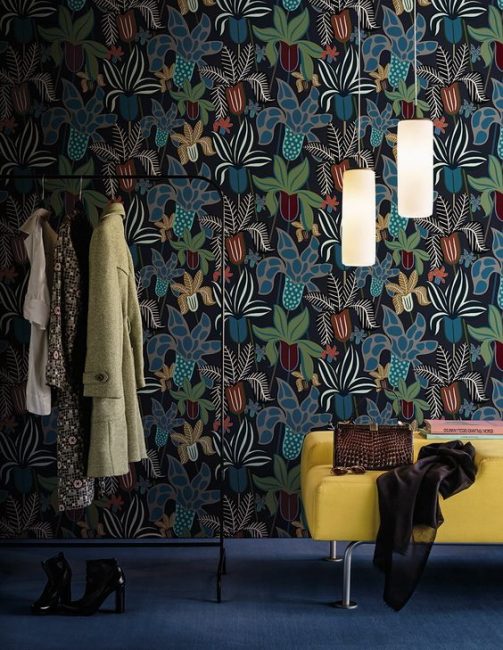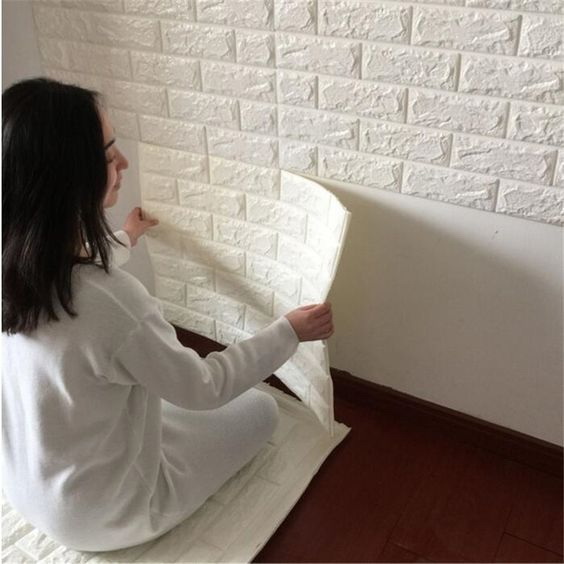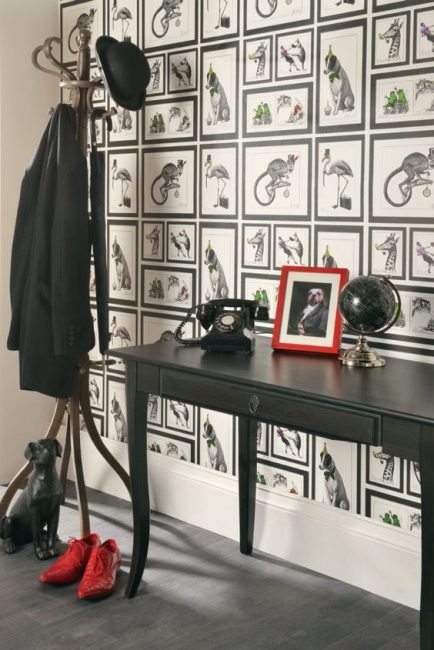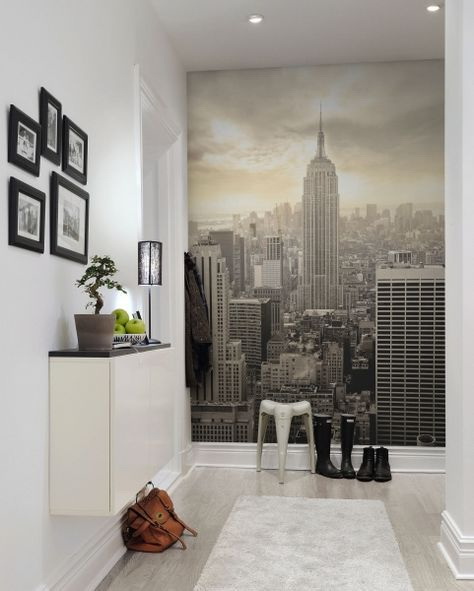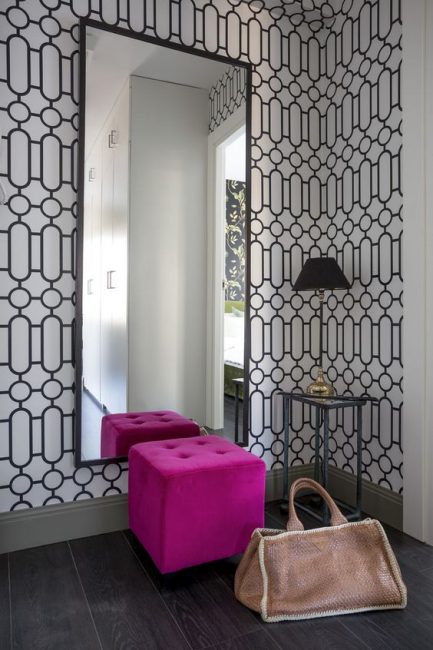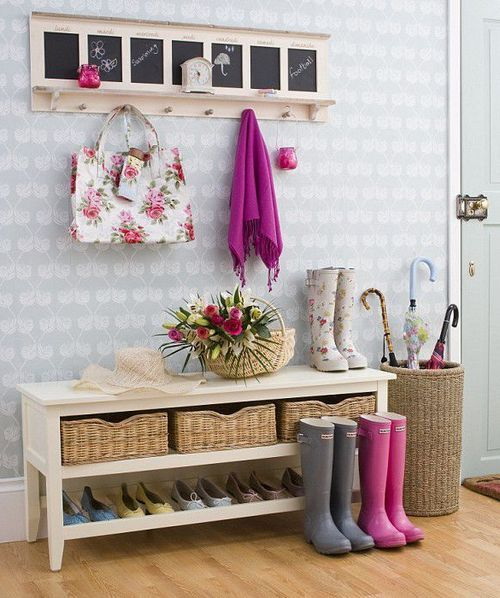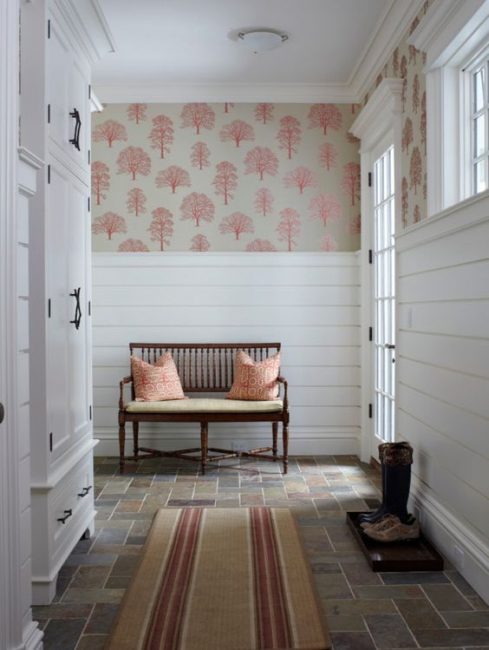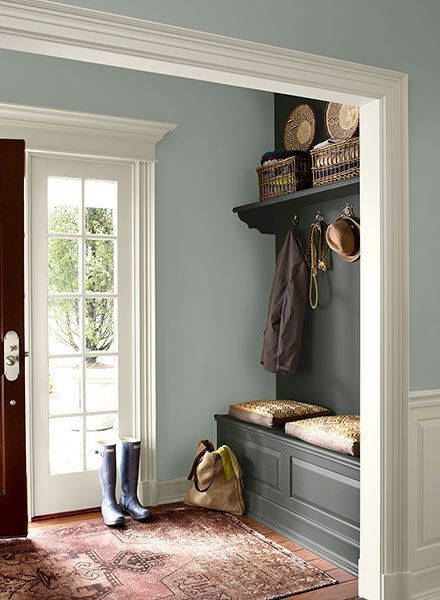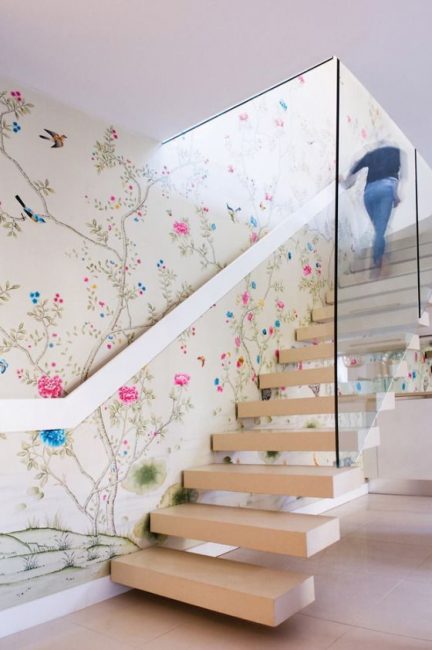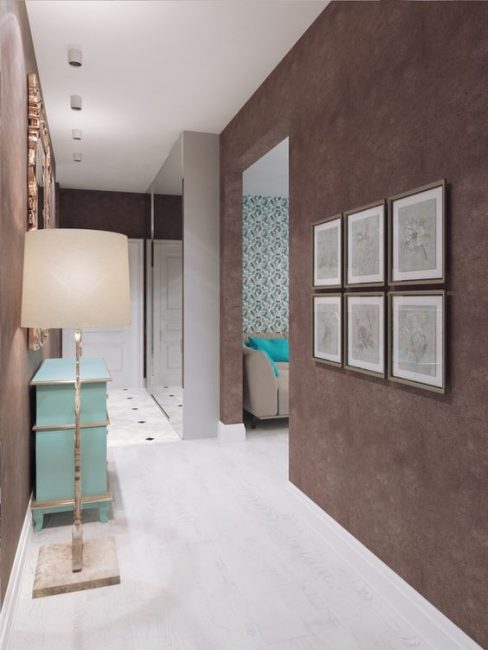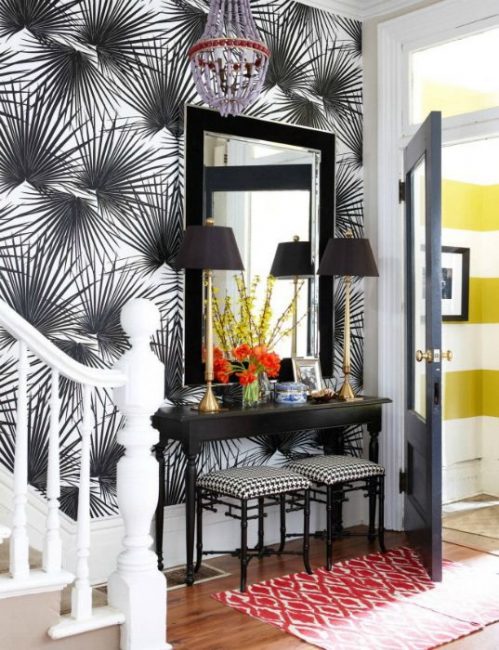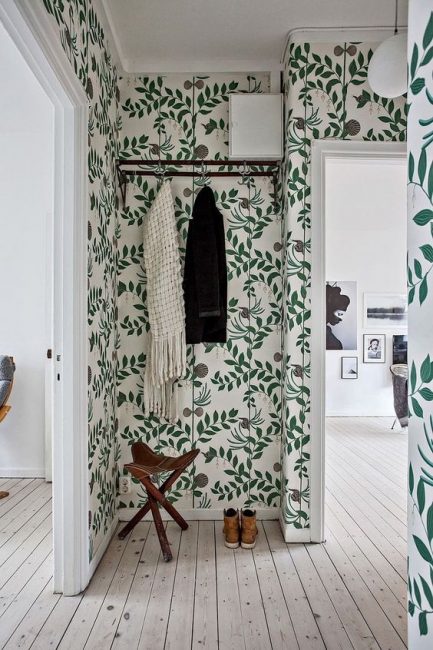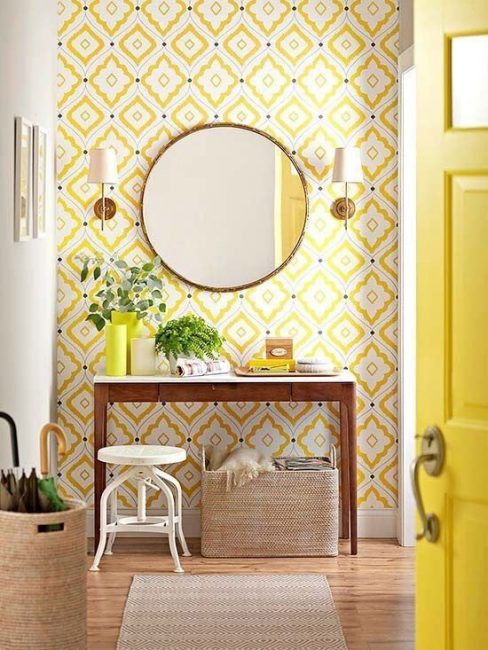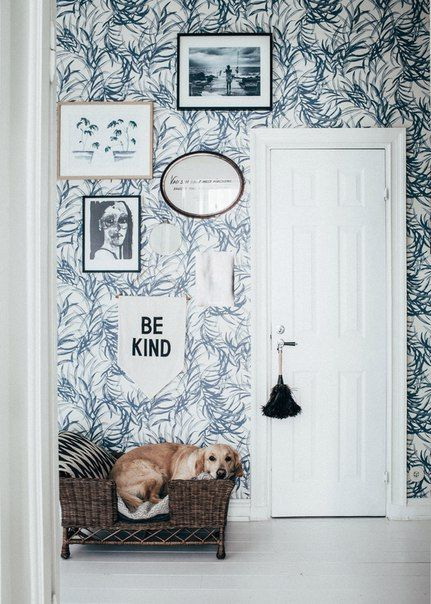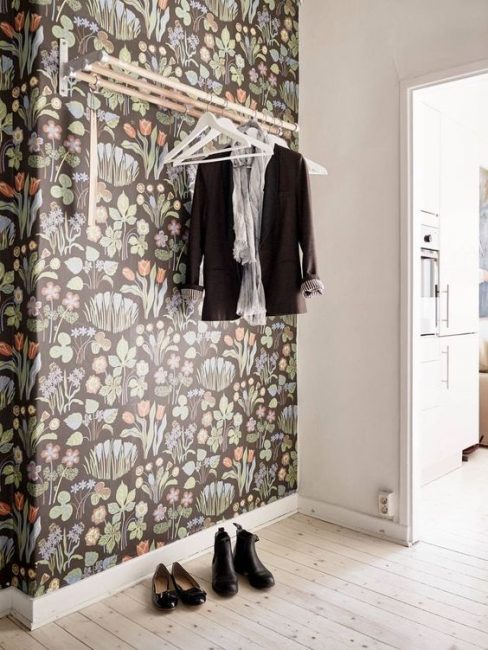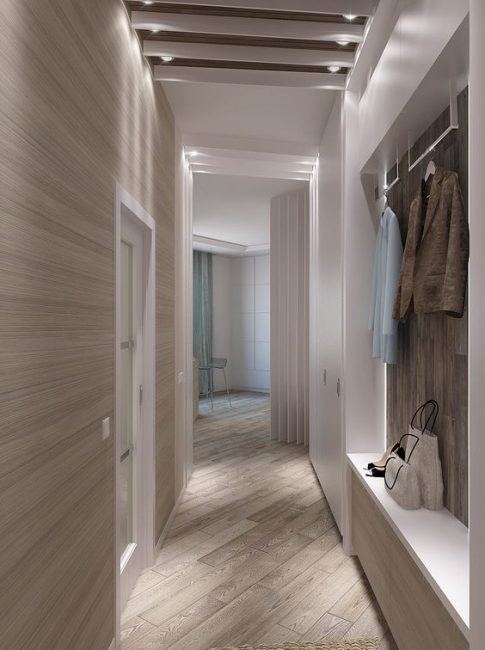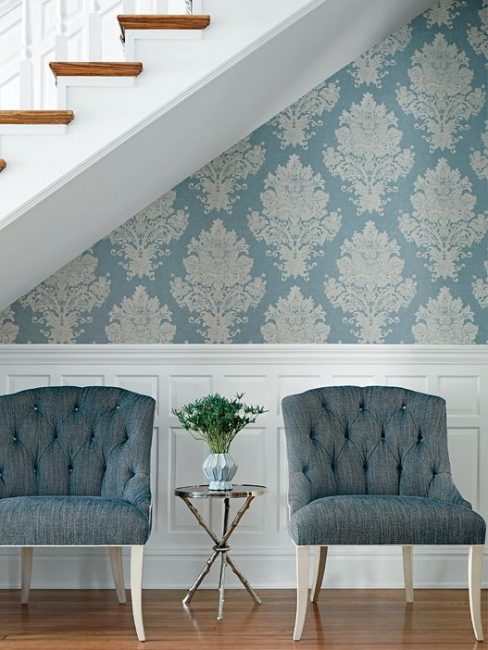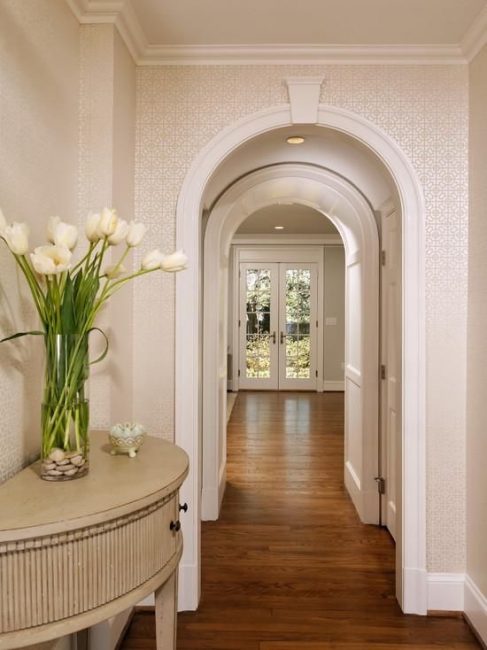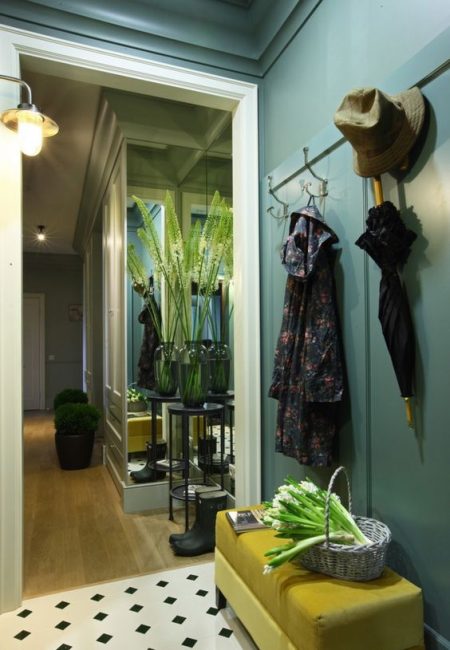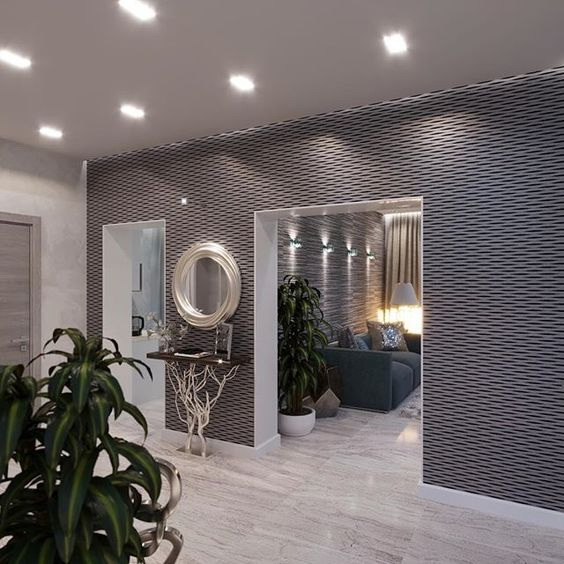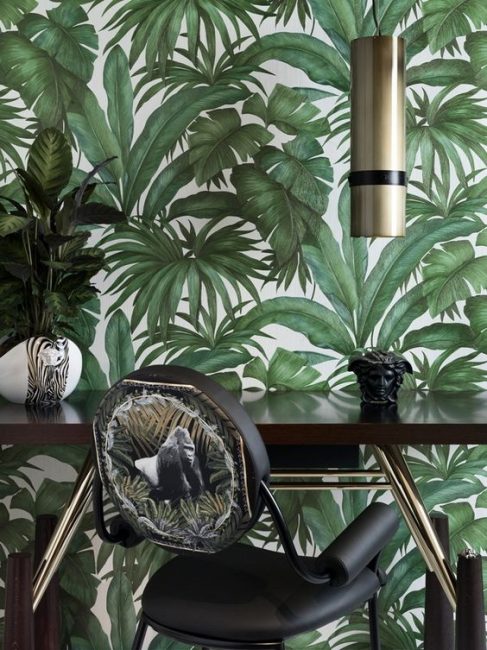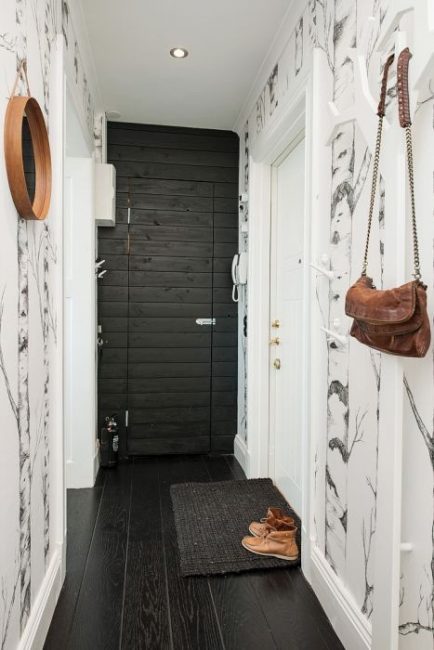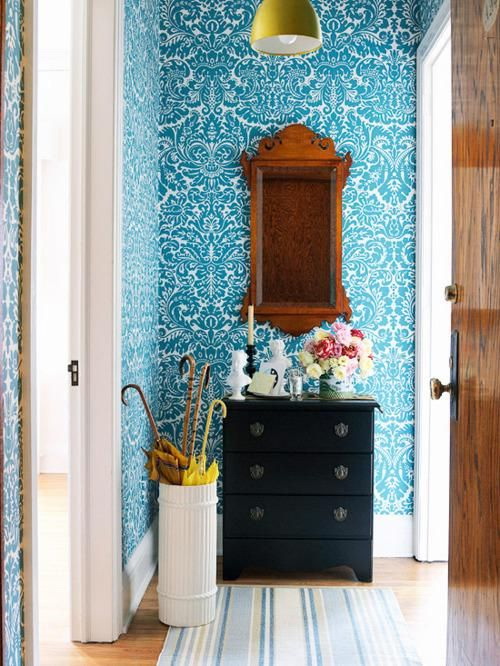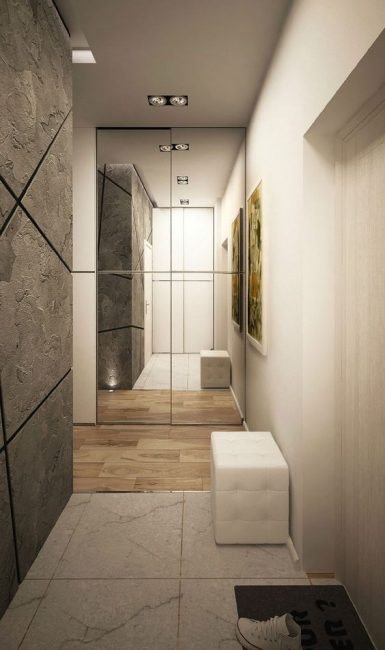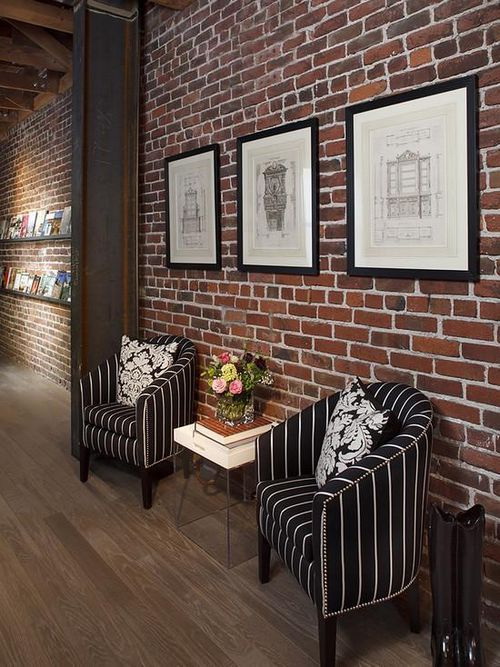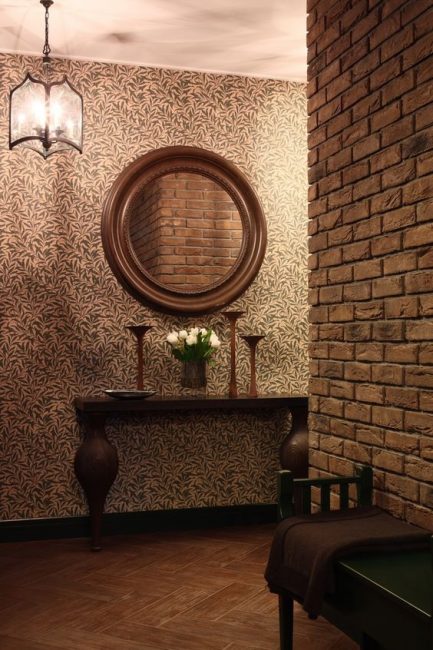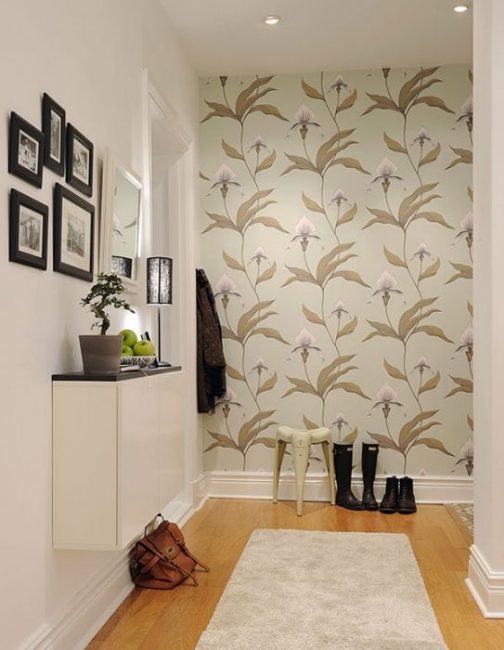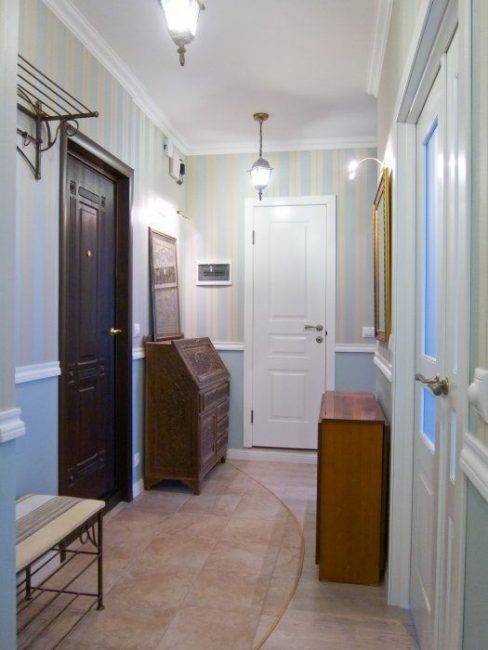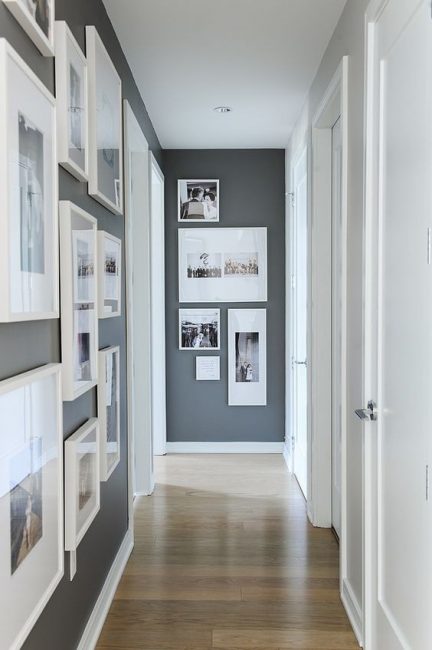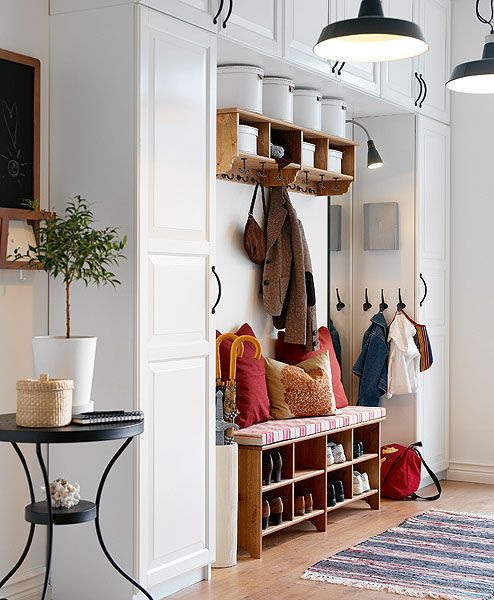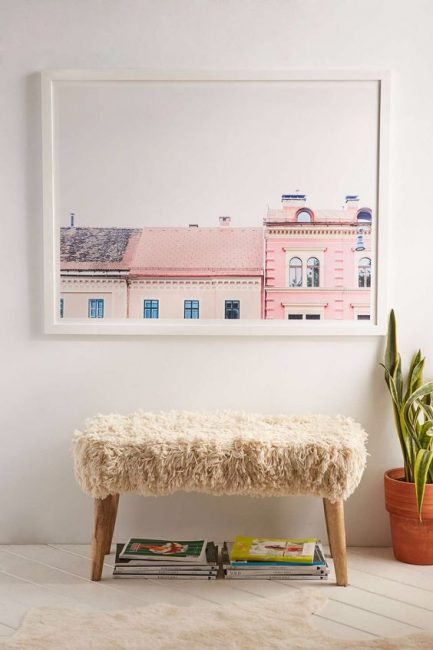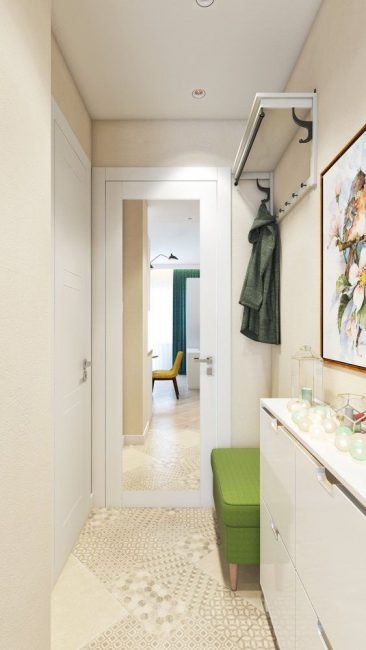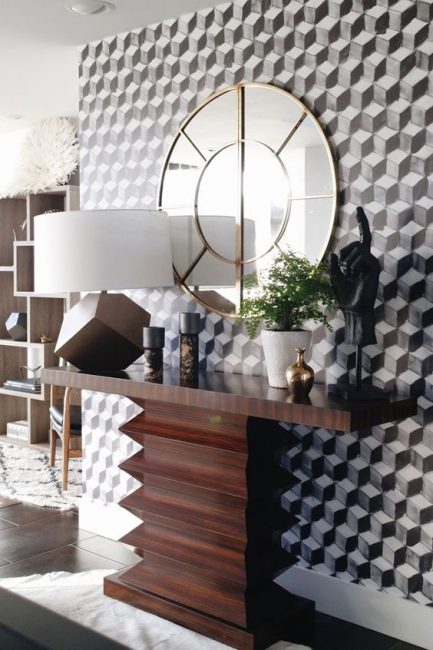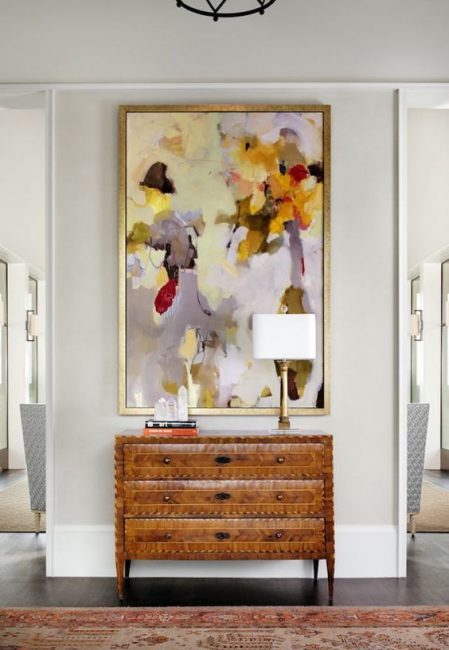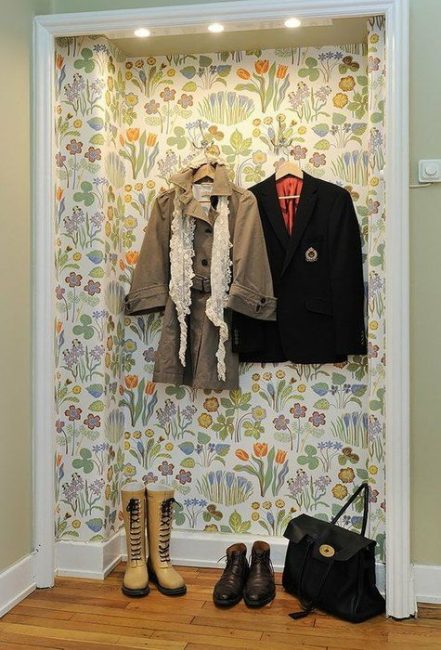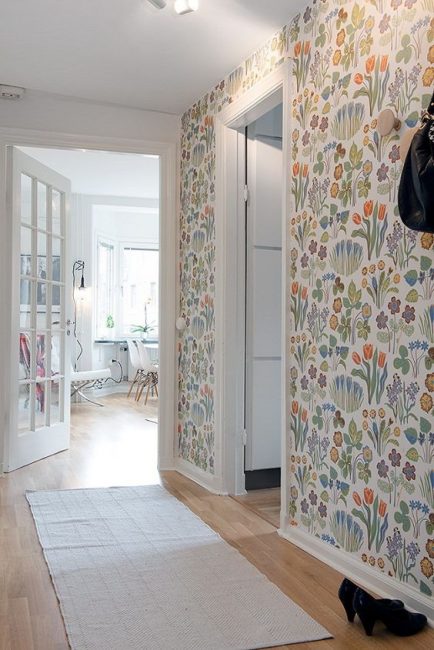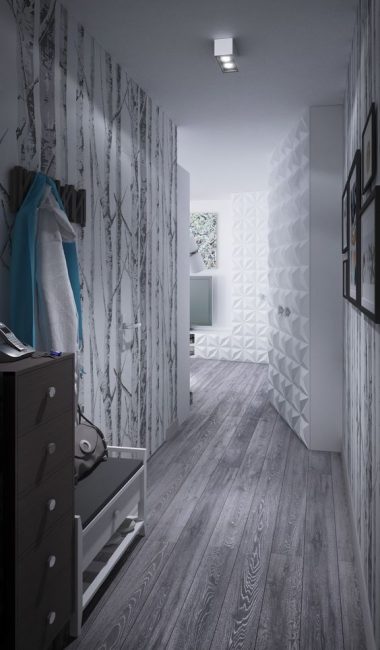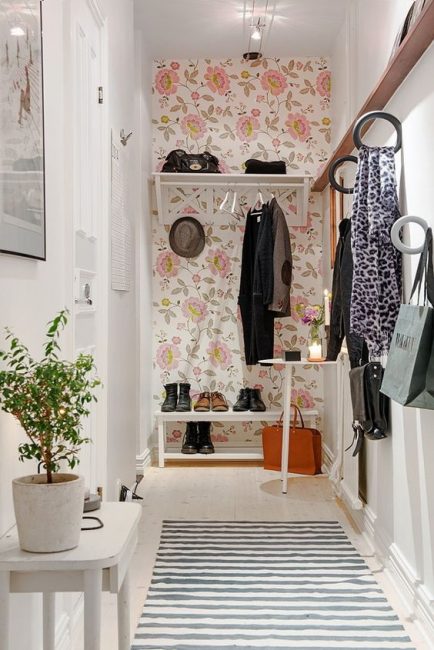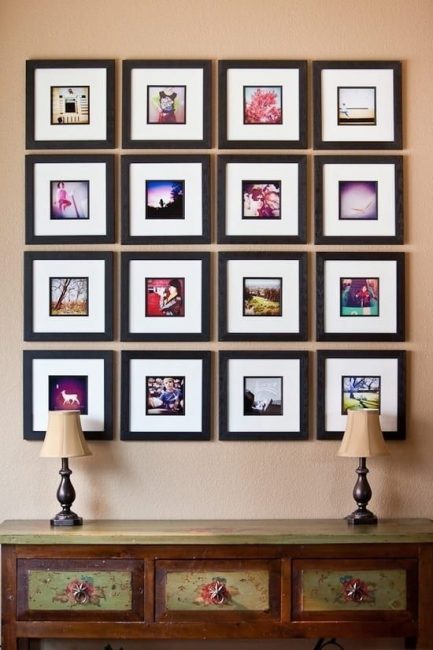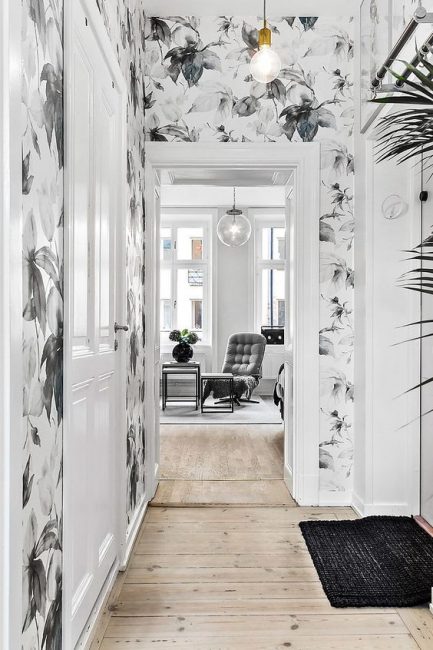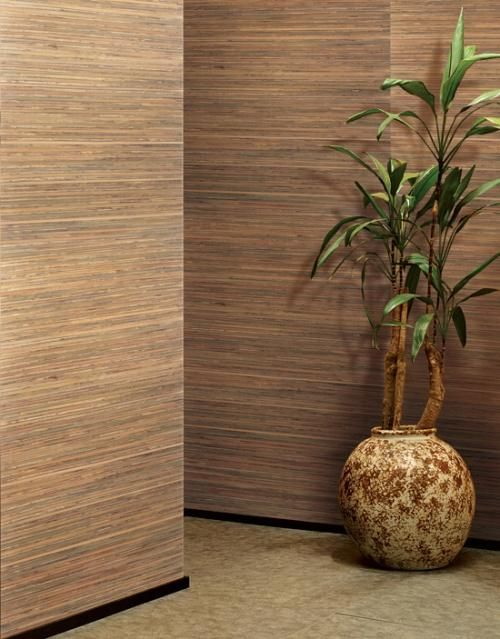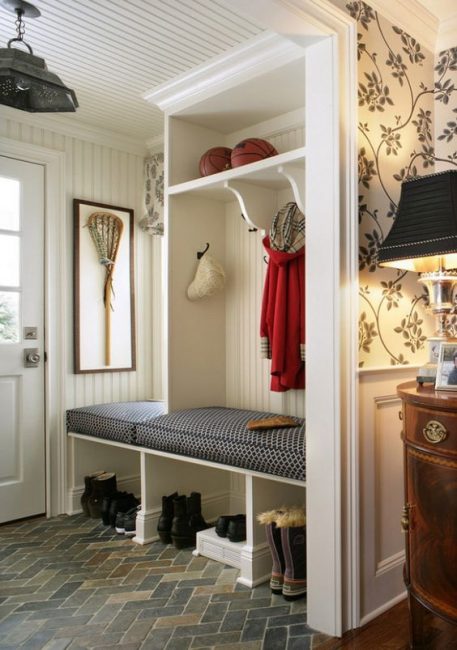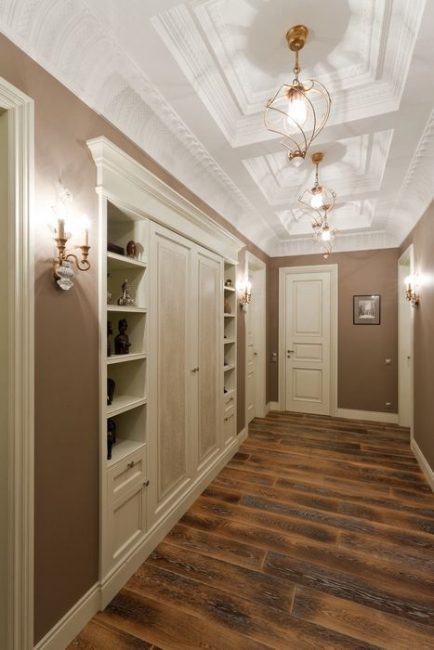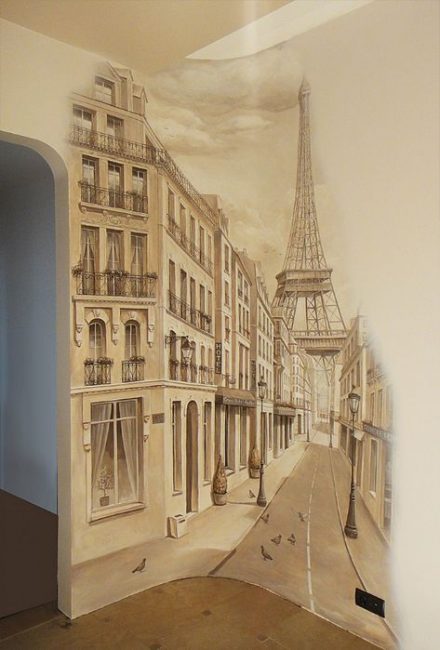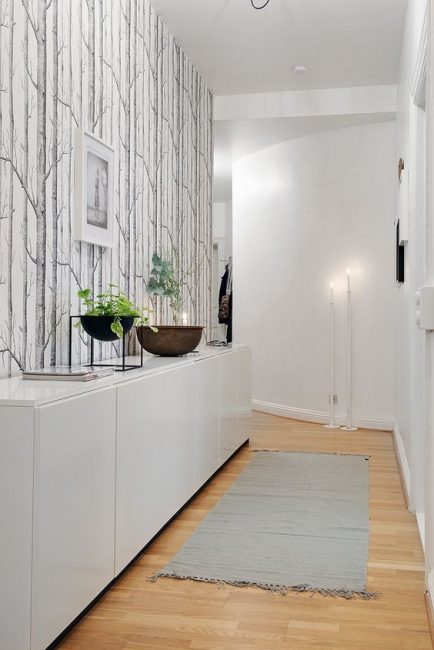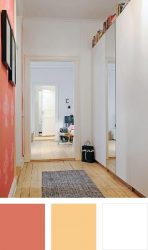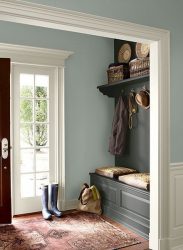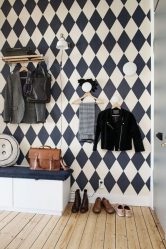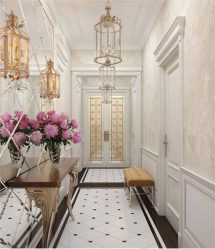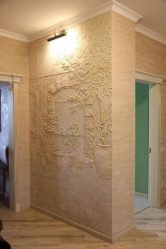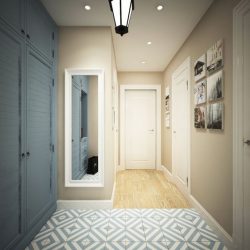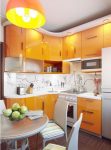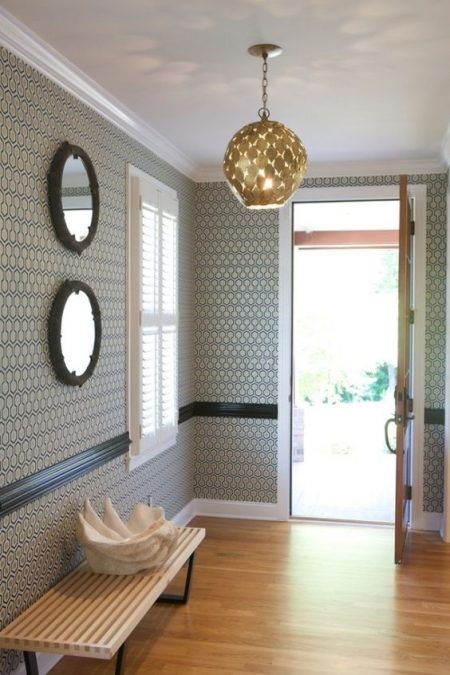
The hallway creates the first impression of the apartment. It should be not only functional, but also beautiful, especially the wallpaper in the hallway.
Content of this article:
Wallpaper in the hallway: what do they win?
This type of finishing material, like wallpaper, amazes with a variety of textures and colors. The stylish interior of the hallway, underlined by the design of the walls, allows you to create an impression about the whole apartment.
Among the advantages:
- availability;
- wide range of;
- environmental friendliness of many feeds;
- ease of use;
- attractiveness;
- masking minor defects of the walls;
- the possibility of creating a spectacular interior;
- resistance to fading;
- the possibility of combining different textures, colors;
- good compatibility with furniture and decor.
It is possible to use a very different approach in the design of walls: from the traditional to the original, innovative, which is determined by the interior of the apartment, the hallway in particular.
It is desirable that the hallway, whatever its size, is not overloaded with furniture and accessories. In this case, the space will become freer, and the heaviness, the gloom can be avoided.
return to menu ↑ return to menu ↑Multicolor or monotony, which is better?
The impression of the apartment begins to take shape even from the threshold. Therefore, I want to give it the features of elegance, add spectacular, light colors.
But at the same time the hallway is the place where dust is brought in, dirt from the street. So, very light shades do not fit.
But this room is often small-sized, devoid of natural light. Consequently, dark tones do not suit us. How do we choose?
Selecting the form, choosing texture and color, it is very difficult to choose one or another option. Consider first the colors.
return to menu ↑ return to menu ↑Monophonic: Pros and Cons
In most apartments, the entrance hall is a small room without windows. Monochrome calm colors in bright colors will allow you to visually make the room larger and more spacious.
The light background of the walls is an excellent option for harmonious combination with furniture, for example, paintings with mirrors.
Bright colors in a small room can do a disservice, concealing even a small amount.
If by design juicy in terms of color palette are desirable, then you can apply them as inserts, combining with a calmer range of shades.
Dark for the hallway as a monocolor is not desirable. If they are used, only with companion flowers. This will avoid darkness and hide the shortcomings of the walls themselves.
Solid colors are attractive because of their conciseness, which will be an ideal background for decor and decor.
Light shades harmoniously look not only with light, but also with dark furniture.
The duet of milky color in combination with furniture of chocolate color looks very beautiful. Harmonious combinations give olive and dairy, etc.
return to menu ↑ return to menu ↑Prints: games with color
With prints - a beautiful option that fits many styles. Depending on the chosen pattern, you can visually adjust the perception of the hallway.
Large drawing is not an option for a room with a small area. The hallway will seem even smaller, which is completely undesirable. Small drawing will revive the walls.
Equally important is the direction of patterns and ornaments. If the picture has a vertical orientation, it will give the impression of higher ceilings.
With a horizontal arrangement, the walls will appear wider. One of the popular methods in this case is the strip.
return to menu ↑ return to menu ↑Bands: use caution
It would seem that such a simple color is unassuming, but there are some special features. The vertical bar is such an option, at first glance it seems advantageous - it makes the ceilings visually higher.
But here we are waiting for the danger of getting the unpleasant and uncomfortable effect of a well - high and narrow.
When choosing a striped color shades should be chosen soft and not contrast in the event that the area is small.
In addition to the option when the stripes occupy the entire space from the floor to the ceiling, you can consider the design of only the panel part with striped wallpaper. The optimum height is usually about 100 cm from the floor.
Streaks can be decorated walls and in a horizontal direction. This technique allows the hallway to look wider, although it hides the height.
return to menu ↑ return to menu ↑Panel design: a tribute to tradition
Occurring quite often, this option refers to the functional and classic. In this case, different colors can be combined.
It is considered advantageous to combine in the design of dark to highlight panels and light for the rest of the wall.
This option will allow to combine the requirements of practicality and attractiveness, as the low-lying bottom of the walls will be compensated by a light upper part.
The junction of the panels on the upper edge of the panels must be beautifully decorated.As an option - molding of polyurethane or a suitable frieze.
Such an underlined division can be unacceptable if the proportions of the already small corridor suffer.
Doesn’t it work with stripes to create a beautiful interior? Consider no less interesting design options further.
return to menu ↑ return to menu ↑Vertical combination
The combination of two types of colors in one hallway is not always a classic division with the help of panels. A completely different approach is to single out one wall or its protruding part.
Successful combinations are considered options with plain wallpaper.
Or an approach in which with a print combined with monophonic. In this design, a fragmentary wall, a niche or a protruding part can stand out with a large pattern.
return to menu ↑ return to menu ↑Abstraction - a manifestation of originality
In addition to the originality of design, spectacular designs are very practical in design: they are smaller than on plain panels, there are damages and occasional pollution.
Texture and imitation: crocodile, snake, stone ...
The color of the canvas, which imitates natural material (wood, stone, sand, etc.) has been very popular for many years.
Such textures should be used limitedly, since imitation, for example, of a large brick, can be perceived as a pressing influence.
It is desirable that even the textured background was dim and calm. So he will not get bored, and will not be annoying.
return to menu ↑ return to menu ↑Kinds
Before the wallpaper is chosen, it is necessary to critically evaluate everything.
What we pay attention to:
- room parameters;
- the presence of doors;
- the presence of niches;
- furniture;
- desirable color range;
- general style of the whole apartment;
- illumination.
Considering all the objective and subjective data about the hallway, we can conclude about the possibility of using prints and combining several types of materials.
The style of the rest of the room also matters. It will look ridiculous design of the hallway, which is very different from other rooms.
According to our characteristics, we divide everything into such groups:
- For painting.
- Natural.
- Washable
The peculiarity of the hallway, as a room, imposes certain requirements not only on the design, but also on the type of panels.
Not every one of them will be acceptable, and not all of them are equally good for our particular case. Consider the main types, analyzing the pros and cons of materials.
return to menu ↑Paper
Even judging by the name, it is clear that they have a paper basis. This is a cheap option, not every hallway will be practical.
The cloth has not only low cost, but also low durability, and, therefore, and small service life.
The more layers, the stronger the material. However, for a hallway, especially a small one, this is not the best choice, which is completely unacceptable if there are small children or animals in the house.
return to menu ↑For painting
Often found in the design of interiors and quite a popular option - wallpaper, designed for painting.
They are not resistant to mechanical damage.
Among the advantages:
- the possibility of repainting;
- water resistance;
- ability to hide minor defects of the walls.
Liquid
Want to significantly change the hallway space? Then we will study this option in more detail. Apply liquid wallpaper manually, observing accuracy.
They have many advantages:
- can cover almost any surface;
- the absence of ugly joints - they simply do not exist;
- good thermal and noise insulation;
- even hard-to-reach places can be covered.
The disadvantages include long drying and the need to protect from water.
return to menu ↑Vinyl
They are popular, have good performance properties and are beautiful. In their composition there are two layers: vinyl itself and flizelin or paper.
Depending on the manufacturing technique, this type may have different properties:
- dense vinyl - has moisture resistance and resistance to mechanical stress, in the interior can serve as an imitation of stone, plaster, wood, etc .;
- flat vinyl is a washable wallpaper that has a smooth texture;
- foamed - has a volume, texture that allows you to use it for painting.
No cons, too, was not. Good strength and wear resistance are combined with a lack of breathability.
What does it threaten the hallway? Under the wallpaper can start a mold. Do not forget that vinyl emits formaldehyde into the air during combustion.
return to menu ↑Flizelinovye
Dense polymer base allows you to apply them for painting. These wallpapers are easy to glue, level the surface of the wall, have fire resistance and breathability.
The disadvantages include the accumulation of dust on the surface and, of course, the price for high-quality goods. Their feature is transparency, which does not hide the coloring of the walls.
If the wall under them is not perfect, then this option is not for you.
return to menu ↑Other species
In addition to the widely used varieties of wallpaper, materials can be used:
- cork (original, but expensive, difficult to glue, limited palette of colors);
- bamboo (expensive, but eco-friendly, easy to apply, have a limited range of colors);
- acrylic - easy to care for them, have breathability;
- textile - eco-friendly and beautiful, but difficult to care;
- photowall-paper - for giving to an interior of individual features;
- flaxseed;
- velor, etc.
Tips and tricks: move from words to action
Before making a final decision on the choice, it is advisable to study the tips and recommendations from designers.
- If the walls are uneven, there are defects in the surface of the plaster, then it is not advisable to use excessively thin wallpaper - they only emphasize the disadvantages.
- Glossy texture will also not be desirable, since it will highlight all the roughness and irregularities.
- Do you have arches, niches, significant projections or openings in your hallway? Then large prints should be avoided. But small prints or plain sheets will be in place.
- In most hallways there is no natural lighting, so you can safely buy wallpaper without resistance to fading.
- One of the easiest to apply are non-woven and vinyl wallpaper. In addition, you can choose a wide panel that allows you to perform decoration with a minimum number of joints.
- The most difficult in sticking are thin paper wallpaper, which can easily tear when wet.
In the hallway, the walls are subject to pollution due to the specificity of the room, so when choosing, preference should be given to such materials that will withstand cleaning.
Remember that the harmoniously decorated hallway is the hallmark of stylish modern housing.
Original login ideas
Practical and bold options
